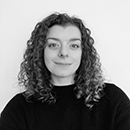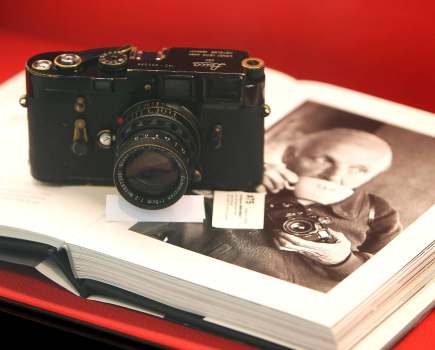Our emerging photographer series aims to shed a light on up-and-coming talent. Photographers are offered a platform to share their work with a wider audience through the AP channels, with the scope of furthering their careers. We also get an insight into their inspirations, the camera gear used and future aspirations, as well as the journey taken into photography – which doesn’t have to be the most traditional route!
Si Jubb and Ethan Parker, who won our Emerging Photographer of the Year award at this year’s AP Awards, recently spoke at our Festival of Photography: Documentary event. Previous emerging photographer award winners include Aliz Kovacs-Zoldi and Tariq Sadu. We’ll regularly be sharing the work of photographers on our website and social media – and even in the magazine – so if you are an someone who has recently started their photography journey or are a student/graduate, share your work with us at [email protected]
Elliot Legg speaks with Jessica Miller for this week’s feature.
When and why did you start taking photographs?
I started when I was a kid — glued to stop-motion videos and then making my own with toy figures on my DS console (very cinematic stuff, obviously). But things took off in my last year of sixth form. I loved the buzz of people saying, “Hey, that’s cool!” about my work. The moment when someone stops, stares, and thinks, “Wow” stuck with me. Photography’s always been my little escape from reality, and because most people around me don’t quite “get” my vision, there’s zero distraction. Just me, my ideas, and the fun of creating.
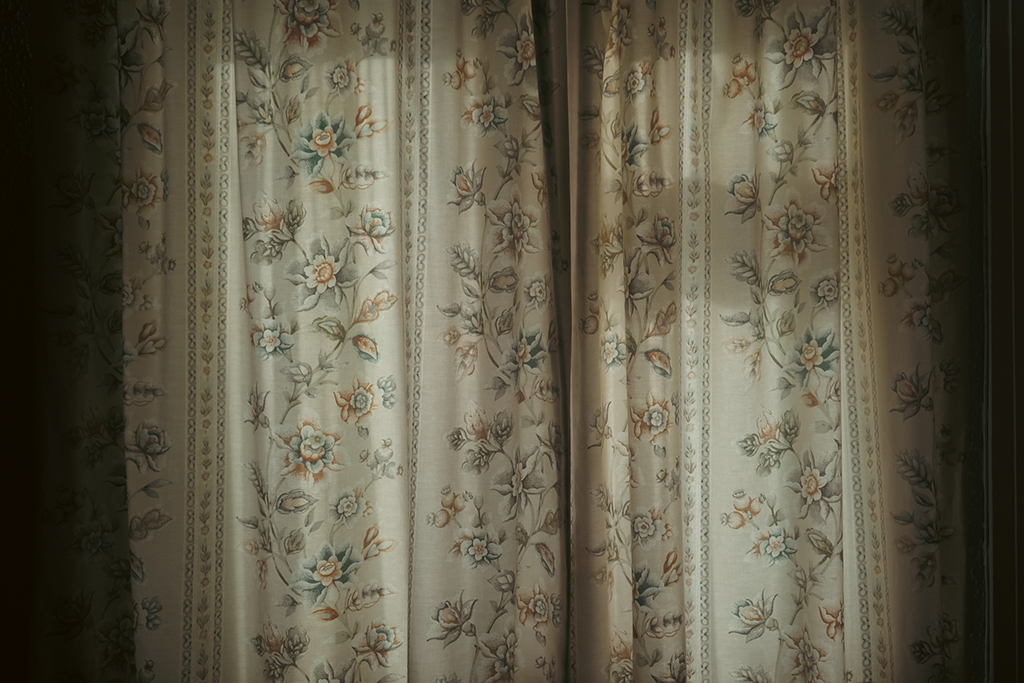
Which genre do you tend to work mostly in?
Documentary photography has always been my go-to, though it came about in an unexpected way. I used to ask my dad which films from his era I should watch, and he’d reel off names like Tarantino, Clint Eastwood — all the classics. I’d sit there, completely hooked on the rawness, grit, and those beautiful vintage tones. That old-school, retro feel just stuck with me.
When it came time to create a final university project — something meaningful for my family and I — all those influences merged into what became Patricia.
What draws you to documentary?
The complete freedom it gives. There are no rules or limitations. You can take something as simple as a headshot and, with the right light, mood, and framing, turn it into something powerful. I love that it’s rooted in real life but still leaves space for creativity and storytelling. Every photo feels like a moment frozen in time, carrying layers of emotion and meaning that go beyond just what’s in the frame. It’s about finding beauty in the ordinary, telling stories that might otherwise go unnoticed, and giving people a reason to stop and feel something.
Tell us a little bit more about your photographic training.
I studied photography at university, and the course was a real eye-opener from day one. It wasn’t just about pressing the shutter, we were taught to think deeper. Every photograph had to be considered both professionally and ethically, as well as from an emotional standpoint.
The course gave us plenty of creative freedom too. If you had an idea, you were encouraged to go out, shoot it, and then figure out how to push it further, to turn it into something bigger and more impactful. That combination of structure, critique, and freedom was exactly what I wanted.
I joined the photography course partly to push myself out of my comfort zone and partly to keep my creativity alive. I left with a head full of knowledge and a completely different perspective.
I realised photography isn’t just a picture — it’s everything that happens before, during, and after you press the shutter. It’s the planning, the connection, the moment, and the responsibility that comes with telling someone’s story. I’m a big believer in ethics, and that will never change — no matter how much fun I’m having behind the camera.
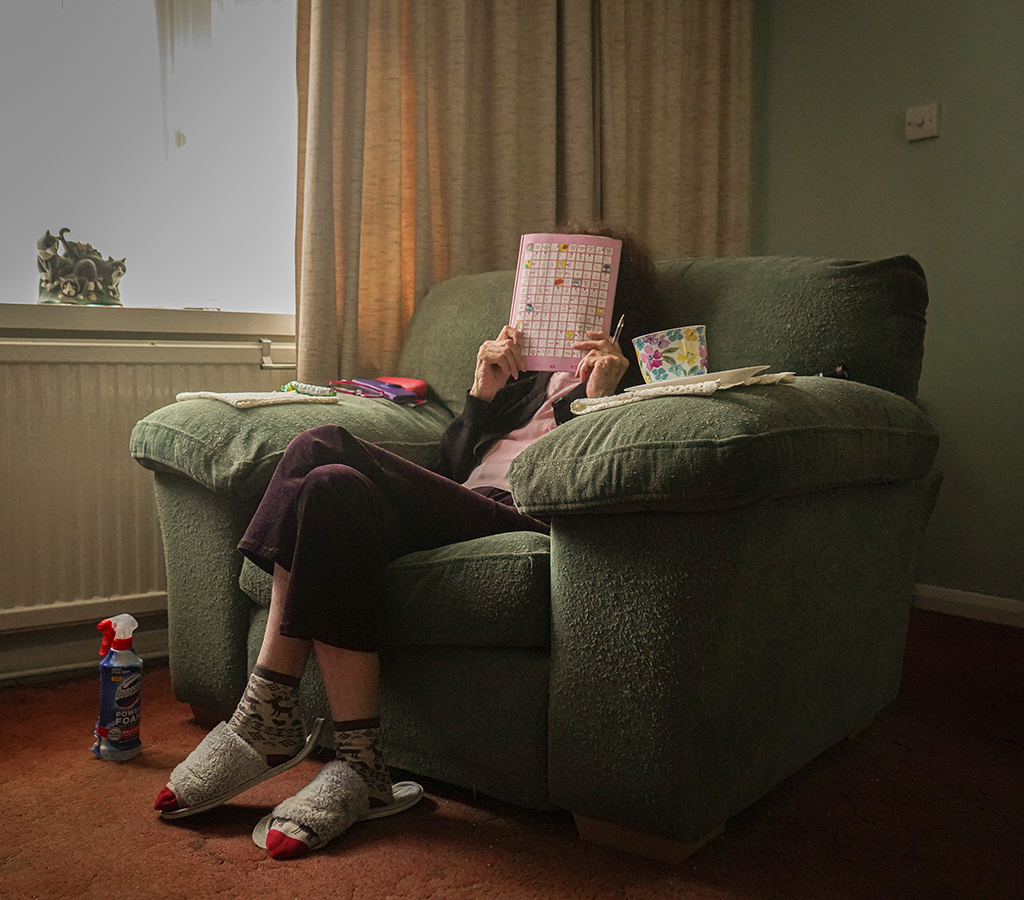
What has been your biggest photographic obstacle so far?
The most challenging project I’ve worked on has been Patricia, my two-year series on my grandmother. On paper, it sounded simple: visit her house every week and photograph our time together. But very quickly, it became something much more complicated.
We’d known for years she had struggled with alcoholism, but when I began shooting, it returned worse than before. Some weeks, I wouldn’t even take a photo. Instead, I’d sit in our chairs across the room, tea in hand, quietly keeping an eye on her to make sure she wasn’t drinking.
This is where ethics became non-negotiable for me. If I smelt alcohol on her breath, I wouldn’t shoot. As a photographer, that was frustrating — but as her grandson, her safety and well-being came first. I never regretted those visits, though. She’d lived alone for decades, and her home carried a quiet peace that every visitor could feel. That all changed suddenly after she had an accident and a leak made the house uninhabitable.
From a professional perspective, it shifted the direction of the project entirely, making me rethink how her story would end. From a personal one, it broke us as a family. The house we all loved was gone — and with it, our little rituals of tea and long chats about life. In the end, the project became a mix of joy, sadness, and reflection — and I wouldn’t trade the experience for anything.
Who are your biggest influences?
For Patricia, my biggest influences came from photographers who approach storytelling with precision, emotion, and a strong sense of place. Gregory Crewdson through the way he meticulously sets up each frame exactly as he envisions it. The patience and attention to detail in his work pushed me to be more intentional with my own compositions. Diana Markosian’s project Father resonated deeply, not just in its imagery but in its format and presentation; even the small details, like objects on an armchair, added a softness that shaped how I thought about atmosphere in my series.
Matthew Finn’s project on his mother showed me the impact of using a variety of shot types and how they can build a more layered and intimate narrative. And then there’s Richard Billingham. His Ray’s a Laugh inspired me to push boundaries and think about what kinds of images could become defining moments in a project. Each of these photographers influenced Patricia in their own unique way, helping to shape both my research process and the final body of work.
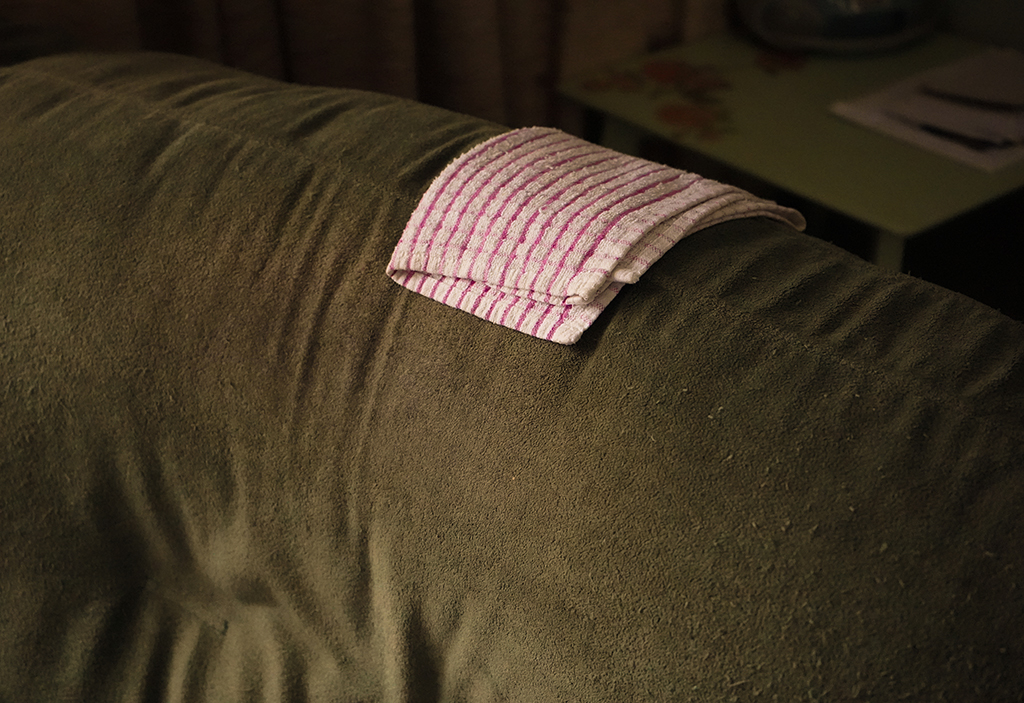
What equipment do you use?
Sony A7 III, 28-70mm, 18-105mm, 70-180mm and Canon Cannonet.
What would be your dream equipment to work with?
I’m still in the early stages of my career, so I’m open to experimenting with as many different cameras and lenses as I can get my hands on. For me, it’s less about chasing one “dream” setup and more about finding the right tool for the story I’m telling. As long as the equipment helps me capture well-exposed images packed with detail and depth, I’m happy.
What has been the highlight of your career so far?
The highlight so far has to be Patricia. It gave me the chance to spend time with someone I love deeply, week after week — and even now, I still visit her for a cup of tea when I can. What made it even more special was how much my family became part of the process. They contributed ideas for the book’s cover, the layout, and countless other details. I may have taken the photographs, but it truly felt like a project we all created together.
Sharing it with a wider audience was unforgettable. At Free Range London 2025, the turnout was incredible, and hearing people talk about how the work reminded them of their own loved ones was deeply moving. I wanted the project to have an impact — I just didn’t realise how big that impact would be. It was truly special.
What are your hopes for the future?
To use my photography to make a difference. Working with people, charities, and organisations that are creating real change. We live in a world where so much is taken for granted, and I want my images to make people pause and think about their next steps.
At the same time, I’d love to take on big, fun, and ambitious creative projects. More than anything, I want to see where this industry can take me — and I hope that journey leads somewhere truly impactful.
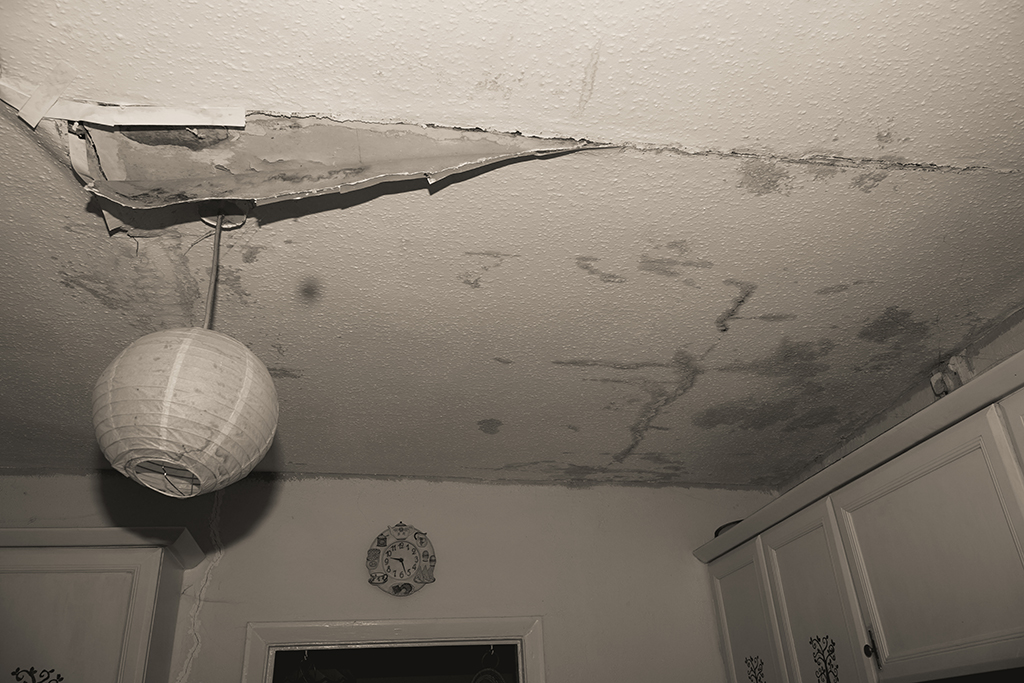
Do you have a dream assignment?
I’ve got a few dream assignments in mind, but my top one would be to immerse myself in the life of someone who lives alone or in a quiet, and build a project from that first meeting, capturing the moments and memories that unfold from there. I think there’s something incredibly powerful in telling the story of one person’s world in depth.
Beyond that, I’d love to work in sports. Making it look cinematic, telling the story of a season through images that capture the emotion, passion, and grit that make it so special. And of course, travelling abroad to create work on a particular place or its people is high on the list.
What piece of advice would you give to other aspiring photographers?
The best piece of advice I can give — and the one I’ve heard time and again from both tutors and industry professionals — is simple: go out and shoot. You might not come home with “the” shot every time, but you’ll probably discover a new camera setting, learn something about your subject, or see the world in a slightly different way. Striving for that perfect image is great, but the real growth comes from learning — learning your equipment, your subject, and the craft itself.
Shoot regularly – whether it’s a quick portrait of a friend or a few frames on a dog walk. The transferable skills you build are invaluable. Show your work too and ask for constructive criticism, take it on board and use it to spark your next idea.
There’s no single “right” or “wrong” in photography — it’s about how much you want to push yourself. For me, asking myself “How badly do I want this?” kept me motivated in my final months at university.
Instagram: @elliot_legg_
More reading:


